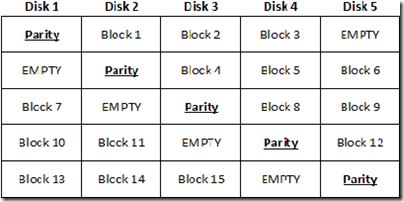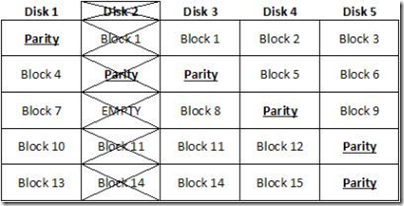
The advantages and disadvantages of RAID 5EE
RAID 5EE is very similar to RAID 5E with one key difference — the hot spare’s capacity is integrated into the stripe set. In contrast, under RAID 5E, all of the empty space is housed at the end of the array. As a result of interleaving empty space throughout the array, RAID 5EE enjoys a faster rebuild time than is possible under RAID 5E.
RAID 5EE has all of the same pros as RAID 5E but enjoys a faster rebuild time than either RAID 5 or RAID 5E. On the cons side, RAID 5EE has the same cons as RAID 5E, with the main negative point being that not a lot of controllers support the RAID level yet. I suspect that this will change over time, though.
As is the case with RAID 5E, RAID 5EE requires a minimum of four drives and supports up to eight or 16 drives in an array, depending on the controller. Figure C shows a sample of a RAID 5EE array with the hot spare space interleaved throughout the array.
 A RAID 5EE array with five drives
A RAID 5EE array with five drives
When a drive fails, as shown in Figure D, the empty slots are filled up with data from the failed drive.

